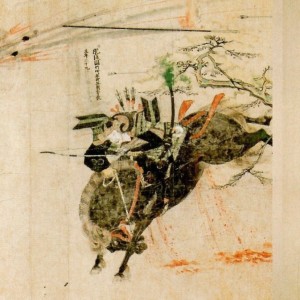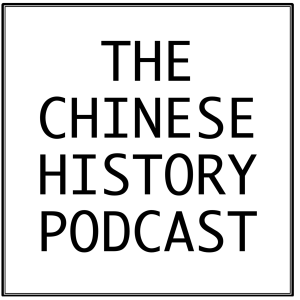
Diplomacy, War, and Interstate Order in the Late 13th century East Asia: A Reconsideration of the Mongol Invasions of Japan
 2022-04-03
2022-04-03
The two Mongol-Yuan invasions of Japan (1274 and 1281) were important events in Japanese history. The two typhoons that destroyed the Mongol fleet, known as "divine wind," (shinpū 神風, better known today as kamikaze) would forever be etched into Japanese historical memory, directly influencing the so-called kamikaze suicide bombers of World War II. Most scholarship on the topic has focused primarily on the military aspect, but before and after the invasions there was also an intense diplomatic effort behind the scenes involving the Mongol-Yuan, Kamakura Japan, and Koryŏ Korea in an attempt to integrate Japan peacefully into the Mongol world order. In this episode, Greg speaks to USC PhD candidate Lina Nie about her dissertation research on this diplomatic effort. Lina will share with us some new perspectives on why the Mongols wanted to engage and ultimately invade Japan, what the diplomatic negotiations can tell us about the interstate order of East Asia during that time, and how her research both complements existing scholarship and adds a new layer in our understanding of the Mongol invasions of Japan.
Contributors
Lina Nie
Lina Nie is a Ph.D. candidate in the Department of History at the University of Southern California. She graduated from the Hong Kong University with double majors in Chinese History and Japanese Studies and received her MA from Harvard University. Her research interests are on maritime, diplomatic, military, and cultural exchanges among China, Korea, and Japan. She is also interested in global history and comparative history in a broader geographical context that goes beyond East Asia. Her Japanese article discussing the traditions of Japanese culture won the second runner-up in the annual essay contest held by the Japanese Consulate General in New England in 2017.
Greg Sattler
Gregory Sattler is a Ph.D. student in the Department of History at the University of California, Los Angeles. His research focuses on sea merchants in East Asia from the ninth to thirteenth centuries, with a particular consideration of their place in society, their trade networks, and their relationships with government officials. Gregory has recently published an article titled “The Ideological Underpinnings of Private Trade in East Asia, ca. 800–1127” (Journal of Asian Humanities at Kyushu University 6) and he is currently working on two additional manuscripts. He has received degrees in Taiwan and Japan, and is a proficient speaker of both Chinese and Japanese.
Credits
Episode no. 10
Release date: April 3, 2022
Recording location: Los Angeles, CA
Transcript
Bibliography courtesy of Lina Nie
Images
Cover Image: The famous battle scene depicting the samurai Takezaki Suenaga escaping the Mongol forces. (Image Source)
Map of the two Mongol invasions. (Image Source)
A 1266 letter Khubilai sent to Japan. (Image Source)
Japanese samurai boarding a Yuan ship during the 1281 invasion. (Image Source)
References
Andrade, Tonio. The Gunpowder Age: China, Military Innovation, and the Rise of the West in World History. New Jersey: Princeton University Press, 2016.
Conlan, Thomas. In Little Need of Divine Intervention: Takezaki Suenaga’s Scrolls of the Mongol Invasions of Japan. Ithaca: Cornell University, 2001.
Fukuokashi maizō bunka zai 福岡市埋蔵文化財年報. Ed. Fukuokaken Kyoiku Iinkai福岡県教育委員会, vol. 274, 2019.
Kamakura ibun鎌倉遺文. Ed. Takeuchi Rizō竹内理三. Tokyo: Tōkyōdō Shuppan, 2008.
Cambridge History of Japan: Medieval Japan (vol. 3), eds. John Hall, Marius Jansen, Madoka Kanai, and Denis Twitchett. Cambridge: Cambridge University, 1990.
Kim Gu 金坵. Chipojip 止浦集. Han’guk munjip ch’onggan 韓國文集叢刊. Seoul: Minjok Munhwa Ch’ujinhoe, 1991.
Kuraki kaitei iseki hakkutsu chōsa gaihō 倉木崎海底遺跡発掘調査概報. Ed. Ukenson Kyoiku Iinkai宇検村教育委員会. 1993.
Mass, Jeffery. Yoritomo and the Founding of the Kamakura Bakufu. Stanford: Stanford University Press 1995.
Robinson, David. Empire’s Twilight: Northeast Asia Under the Mongols. Cambridge, MA: Harvard Yenching Monograph, 2009.
Cambridge History of China vol.6: Alien Regimes and Border States, eds. Herbert Franke and Denis Twitchett. Cambridge: Cambridge University, 1994.
Rossabi, Morris. Khubilai Khan: His Life and Times. Berkeley: University of California Press, 2009.
Shultz, Edward. Generals and Scholars: Military Rule in Medieval Korea. Honolulu: University of Hwaii Press. 2000.
Wang, Sixiang. “What Tang Taizong Could Not Do: The Korean Surrender of 1259 and the Imperial Tradition.” T'oung Pao (2018), pp.338-383.
Yamauchi Shinji 山内晋次. Nichisō bōeki to iō no michi 日宋貿易と「硫黄の道」.Tokyo: Yamakawa Shuppansha, 2009.
More Episodes
Create your
podcast in
minutes
- Full-featured podcast site
- Unlimited storage and bandwidth
- Comprehensive podcast stats
- Distribute to Apple Podcasts, Spotify, and more
- Make money with your podcast
It is Free
- Privacy Policy
- Cookie Policy
- Terms of Use
- Consent Preferences
- Copyright © 2015-2024 Podbean.com






